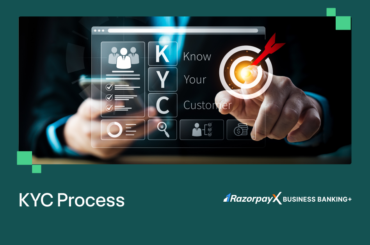Table of Contents
What is an Employee Management System?
An employee management system, also known as EMS, is a software application designed to streamline and automate various HR processes within a company.
Previously, companies would maintain employee records manually on spreadsheets. This is a massive strain on resources and time, and results in unnecessary mistakes.
With employee management systems, businesses today can leave this entire function to automation.
What is Employee Management?
Employee management encompasses overseeing and managing employees within an organization. All aspects of employee interaction, from recruitment and onboarding to performance evaluation and compensation come under employee management.
Employee management is a key aspect of the larger Human Resources function, which also includes compensation, benefits, employee relations, and legal compliance.
Importance of Employee Management
Well-managed employees are more likely to be productive and engaged. When employees feel valued and appreciated in the workplace, they find intrinsic motivation to work.
This further leads to reduced turnover since happy employees stay on with their employers for many years. A lower turnover leads to reduced costs since hiring and training new employees can prove to be very costly for any business.
Businesses with a robust employee management system also boast low absenteeism – resulting in more productive hours.
Benefits of Employee Management System
EMS provide a number of benefits to businesses, including:
- Improved efficiency and productivity: EMS can automate many HR tasks, which can free up HR staff to focus on more strategic work. This can also help to improve employee productivity, as employees will have more time to focus on their core jobs.
- Reduced costs: EMS can help businesses to save money on HR costs by automating tasks and reducing errors. This can also help to improve compliance with HR regulations, which can further reduce costs.
- Increased employee engagement: EMS can help businesses to improve employee engagement by providing employees with self-service access to HR information and by streamlining communication between employees and HR. This can lead to a more positive and productive work environment.
- Improved decision-making: EMS can provide businesses with valuable insights into their workforce, which can help them to make better decisions about hiring, training, and development. This can lead to a more competitive workforce and improved business performance.
What is an Employee Management Service?
Some companies choose to outsource their employee management functions, instead of hiring a dedicated in-house team.
Employee Management Services carry out HR tasks like payroll, compliance, performance evaluation and more. Outsourcing these tasks can save businesses money and resources. At the same time, outsourcing such a critical task can lead to loss of control over HR processes and challenges in communication, coordination and security.
The best and easiest way to streamline employee management function is to automate it.
What Makes a Good Employee Management System?
A good employee management system (EMS) should be able to streamline HR processes, improve employee productivity, and enhance overall business performance. Here are some key characteristics that make a good EMS:
-
Comprehensiveness: The EMS should cover a wide range of HR functions, including payroll, attendance tracking, benefits administration, performance management, and recruitment. This will help to centralize HR data and provide a single platform for managing all aspects of the employee lifecycle.
-
Ease of use: The EMS should be easy to learn and use for both HR professionals and employees. The interface should be intuitive and user-friendly, and the system should provide adequate training and support resources.
-
Scalability: The EMS should be able to scale with the organization’s growth. This means that the system should be able to accommodate an increasing number of employees and handle more complex HR processes.
-
Security: The EMS should have robust security measures in place to protect sensitive employee data. This includes data encryption, access controls, and regular security audits.
-
Integration: The EMS should be able to integrate with other business systems, such as accounting and project management software. This will help to streamline data flow and eliminate the need for manual data entry.
-
Reporting and analytics: The EMS should provide comprehensive reporting and analytics capabilities. This will help HR professionals to track trends, identify areas for improvement, and make data-driven decisions.
-
Compliance: The EMS should help the organization comply with all applicable HR and labor laws. This includes tracking compliance deadlines and providing automated notifications.
-
Mobile accessibility: The EMS should be accessible to employees on mobile devices. This will allow employees to access HR information and perform tasks from anywhere, at any time.
-
Cost-effectiveness: The EMS should provide a good return on investment (ROI). The cost of the system should be justified by the benefits it provides, such as improved efficiency, reduced errors, and increased employee engagement.
How to Choose the Best Employee Management System?
Here are some key steps to consider when picking an employee management system.
Define your needs: Start by clearly defining your business’s specific needs and requirements, while considering the size and industry style of your business. Make sure to also get input from all stakeholders involved in the employee management process.
Conduct thorough research: This is an important step, since a lack of awareness into the features that a good EMS can provide leads to investing in the wrong software. Make sure you consider additional features like mobile access, reporting, analytics and compatibility with existing systems.
Pricing and negotiation: Obtain detailed pricing information from every shortlisted vendor, and negotiate the best possible price for your organisation.
Implement and train: Once your organization has purchased the best employee management system, it is important to develop an implementation plan that includes training for all users.
Best employee management system for your business
RazorpayX Payroll is an advanced cloud-based employee management system developed by Razorpay, a leading fintech company known for its secure and innovative payment solutions.
The RazorpayX Payroll software is designed to streamline and automate the entire payroll process, providing you with a powerful platform to manage your employees’ compensation and benefits effortlessly.
FAQs
What is employee management best practices?
Automate all repetitive employee management-related tasks to avoid wasting resources and unnecessary mistakes. Keep a close eye on the pulse of your organisation and workplace culture.
What are the objectives of EMS?
The key objectives of a good EMS are to improve HR efficiency, enhance productivity, reduce costs and strengthen compliance.
Do I need an EMS for my business?
Yes - every business which hires even 1 employee can benefit from an EMS. Most HR functions like payroll, tax compliance or performance evaluation are repetitive and must be automated.





